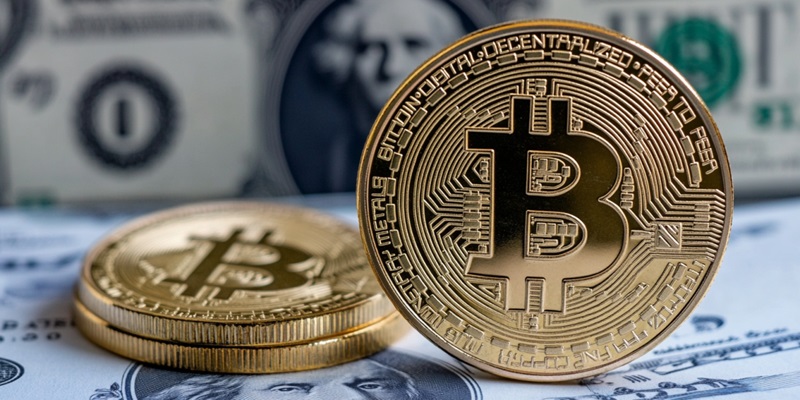The cryptocurrency world has long grappled with issues of transparency and security, particularly when it comes to Bitcoin wrappers like Wrapped Bitcoin (WBTC) and Coinbase Wrapped BTC (cbBTC). The recent integration of Chainlink’s Proof of Reserve (PoR) mechanism into 21.co’s 21BTC product marks a significant advancement in this ongoing struggle. In response to widespread skepticism regarding the true backing of Bitcoin wrappers, this initiative aims to instill confidence by embedding cryptographic guarantees into the process. This development is especially timely given recent events that have further fueled distrust among the cryptocurrency community, such as Sky’s strategic decision to exclude WBTC from its platform and the launch of Coinbase’s cbBTC, which faced immediate scrutiny over its backing security.
Chainlink’s PoR methodology stands out for its ability to verify financial data, including off-chain reserve balances, and transmit this information to blockchain-based smart contracts in real time. Utilizing a network of decentralized oracles, Chainlink can deliver up-to-date and reliable data, thus bolstering the integrity of digital assets like 21BTC. The primary objective here is to ensure that every newly minted 21BTC token is backed by an adequate reserve of actual Bitcoin, thereby countering the risks associated with malicious minting. This initiative by 21.co goes beyond theoretical assurance and offers a practical, technologically backed solution that enhances accountability and security.
Growing Concerns and Skepticism
The integration of Chainlink’s PoR comes at a critical juncture as the cryptocurrency community has been increasingly anxious about the legitimacy and security of Bitcoin wrappers. These concerns have been compounded by notable events, such as the decision by Sky to exclude WBTC from its platform. This move was interpreted as a lack of confidence in the asset’s security, underscoring the urgent need for enhanced transparency mechanisms. Additionally, Coinbase’s recent launch of cbBTC has also faced similar skepticism, with many questioning the robustness of its Bitcoin backing almost immediately after its release.
The distrust surrounding these wrappers has reached a point where even mainstream financial stalwarts are involved. A notable example is BlackRock, which recently filed a request for quicker BTC withdrawal times. Such actions reflect a broader apprehension about the security and reliability of Bitcoin-backed assets. The cumulative effect of these incidents has deepened the community’s mistrust, making the need for transparent and real-time audit capabilities more pressing than ever.
Institutional Trust and Oversight
Paul Grewal, Coinbase’s chief legal officer, recently addressed rumors surrounding Coinbase’s ability and commitment to reimbursing cbBTC holders in the event of a cybersecurity breach. His statements sought to allay fears and reaffirm the platform’s transparency efforts. In the broader context, it’s essential to recognize that regulated custodians and ETF sponsors like Coinbase and BlackRock are subject to stringent oversight and auditing protocols. These institutions must continually institute robust security measures to maintain client trust and regulatory compliance.
BlackRock, with its extensive experience in managing numerous ETFs without significant incidents, is another key player in the realm of institutional trust. The asset manager stores its ETF holdings with highly regulated custodians, reassuring institutional clients about the security and compliance aspects of their investments. However, unlike some of the newer cryptocurrency custodians, BlackRock does not publicly disclose detailed audit information. This relative opacity has often been criticized, but the firm’s impeccable track record in ETF management has so far maintained investor confidence.
Rebuilding Trust with Cryptographic Guarantees
The cryptocurrency world has long faced challenges related to transparency and security, especially with Bitcoin wrappers like Wrapped Bitcoin (WBTC) and Coinbase Wrapped BTC (cbBTC). Chainlink’s integration of its Proof of Reserve (PoR) mechanism into 21.co’s 21BTC product marks a significant advancement in addressing these issues. With rising skepticism about the true backing of Bitcoin wrappers, this move aims to instill confidence by embedding cryptographic guarantees into the system. Events like Sky dropping WBTC from its platform and Coinbase’s cbBTC facing scrutiny right after its launch have heightened distrust in the community.
Chainlink’s PoR mechanism is notable for its ability to verify financial data, including off-chain reserve balances, and transmit this information to blockchain-based smart contracts in real time. By using a decentralized network of oracles, Chainlink provides up-to-date, reliable data, thereby reinforcing the integrity of digital assets like 21BTC. The main goal is to ensure each 21BTC token is backed by an appropriate reserve of actual Bitcoin, mitigating risks tied to malicious minting. 21.co’s initiative offers a practical, technology-backed solution that enhances both accountability and security in the crypto space.

